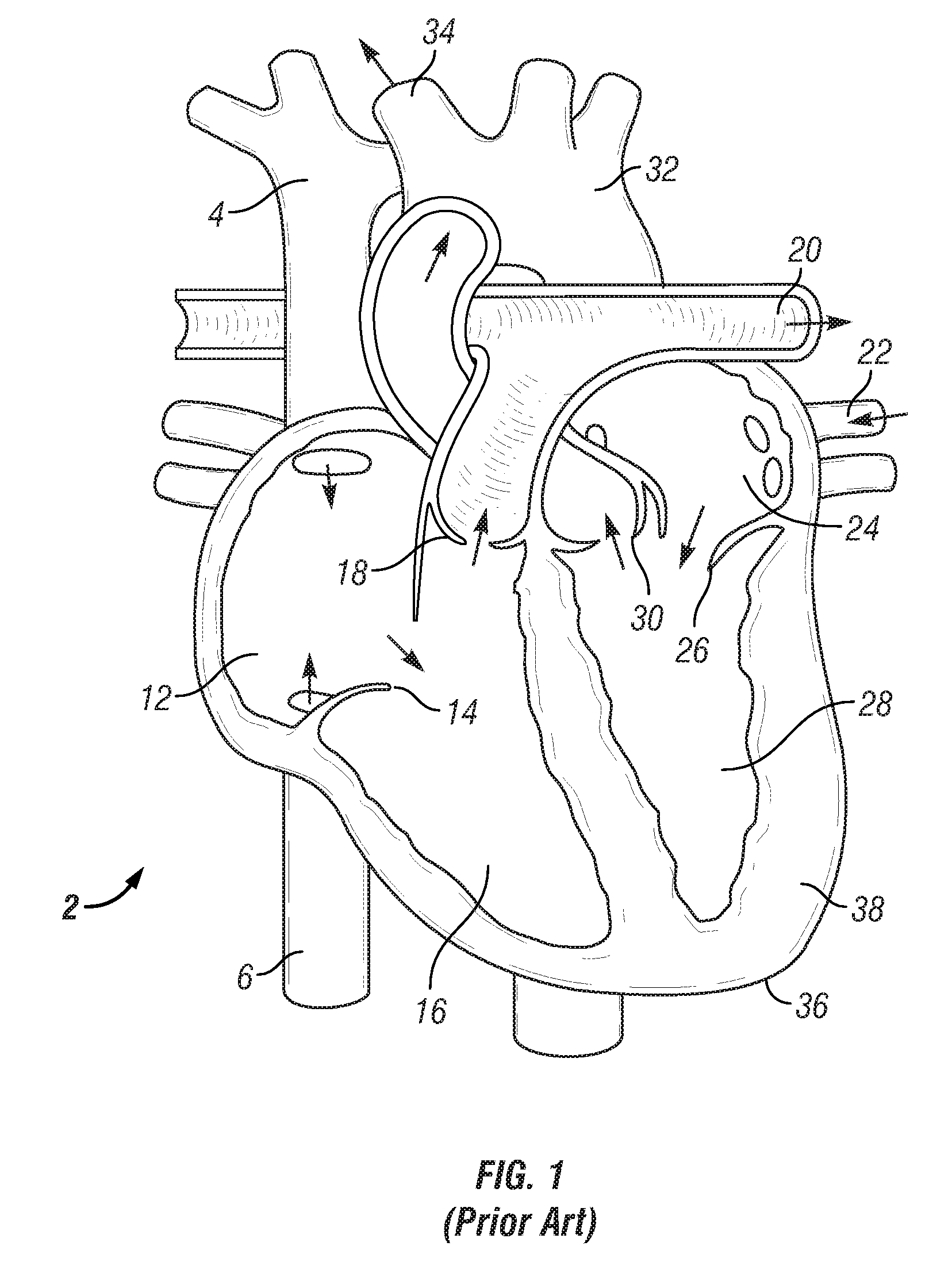Apex to aorta cannula assembly
a technology of aorta cannula and apex, which is applied in the field of medical devices, can solve the problems of chronic heart degradation, ultimate failure, and failure, and achieve the effect of reducing thrombosis
- Summary
- Abstract
- Description
- Claims
- Application Information
AI Technical Summary
Benefits of technology
Problems solved by technology
Method used
Image
Examples
Embodiment Construction
[0028]In general, the invention provides a cannula assembly having a double wall to create a readily installed, high-flow, low-resistant apex-to-aorta shunt that allows for rapid attachment to a blood-pumping device such as a ventricular assistant device, or a combination ventricular assistant device / oxygenator. The procedure for placement of the present invention cannula assembly is generally relatively simple, less time consuming, and less invasive than previous methods. In another aspect, the present invention provides a single lumen cannula with a built-in intraventricular pump that can be inserted at the apex of the heart and pumps blood from the left ventricle across the aortic valve to the ascending aorta.
[0029]FIG. 1 is a diagram of a heart showing various portions relevant to the present invention. The following brief summary of the heart's circulatory system is included to provide a better understanding of the present invention. In general, a heart 2 receives blood from ve...
PUM
 Login to View More
Login to View More Abstract
Description
Claims
Application Information
 Login to View More
Login to View More - R&D
- Intellectual Property
- Life Sciences
- Materials
- Tech Scout
- Unparalleled Data Quality
- Higher Quality Content
- 60% Fewer Hallucinations
Browse by: Latest US Patents, China's latest patents, Technical Efficacy Thesaurus, Application Domain, Technology Topic, Popular Technical Reports.
© 2025 PatSnap. All rights reserved.Legal|Privacy policy|Modern Slavery Act Transparency Statement|Sitemap|About US| Contact US: help@patsnap.com



